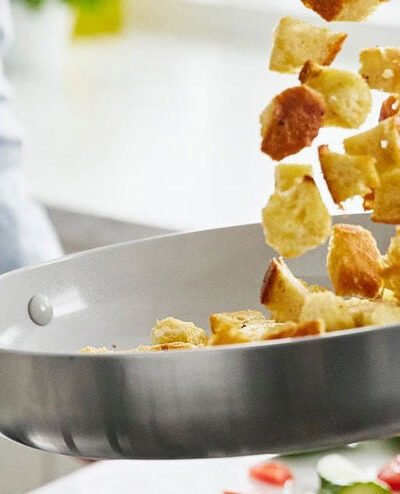 A great meal doesn’t come from the price tag on your gear—it comes from how you use what’s already in your kitchen. Cast iron pans, foil-wrapped bricks, and a few basic spices can turn a simple dinner into something memorable.
A great meal doesn’t come from the price tag on your gear—it comes from how you use what’s already in your kitchen. Cast iron pans, foil-wrapped bricks, and a few basic spices can turn a simple dinner into something memorable.
Cooking goes beyond just feeding yourself. It’s where creativity, routine, and comfort meet. The kitchen often becomes a space to connect with others, experiment with flavors, and build traditions that last. Good technique, a bit of patience, and attention to flavor carry more weight than any top-shelf gadget.
Dry Rubs and Simple Prep That Beat Pricey Marinators
A good dry rub can bring out amazing flavors, often better than expensive marinators. Mix kosher salt with brown sugar in a 2:1 ratio for a balanced sweet and salty base. Add spices like garlic powder, paprika, or black pepper to suit your taste. This keeps prep easy and gets the most out of your ingredients, often impressing guests.
Letting the meat rest after applying the rub helps the flavors soak in and keeps it juicy. A short wait gives the salt time to draw moisture into the meat. Be patient—letting it sit for at least 30 minutes makes a big difference. With a solid rub and enough resting time, home-cooked meals can feel more refined and satisfying.
Reverse Searing With an Oven and Cast Iron Pan
Cooking meat slowly at low heat gives it great flavor and texture. Start with an oven set around 250°F so the meat cooks evenly and stays moist. This gentle heat sets the stage for a great crust later while keeping the inside tender. When it’s time to sear, a good cast iron pan provides the heat needed for a golden-brown finish on steak or pork chops.
An instant-read thermometer helps you hit the right doneness—rare, medium, or well-done. Watching the temperature takes out the guesswork and leads to consistent results. For home cooks looking to improve, combining this method with a thermometer builds confidence.
Brick Chicken and Other Pressed Techniques With Household Items
Pressing chicken with a foil-wrapped brick turns a simple dish into something memorable. The steady pressure helps it cook evenly, lock in juices, and crisp the skin. Just place a heavy object on the chicken as it grills or roasts. It’s an effective way to repurpose items you already have.
A bold rub—herbs, spices, or both—adds even more flavor. Drying the skin before seasoning helps achieve a crisp finish. It’s a simple method that shows how creativity and technique—not expensive tools—can deliver standout results right from your home kitchen.
Smoke Without a Smoker Using Foil and Wood Chips
You don’t need a smoker to get that deep, smoky taste. Soak a handful of wood chips in water for about 30 minutes, then wrap them in a double layer of foil, poke a few holes on top, and place the packet over a burner or charcoal on your grill. As the grill heats up, the chips start to smolder and release that smoky flavor into your food.
Keep the grill at medium heat so the chips smoke slowly instead of burning too fast. For longer dishes, add new packets as needed. The method works well for meat, fish, or veggies and adds extra depth to your food. Try woods like hickory or apple to find your favorite flavor.
Slow-Roasting in Regular Ovens for Tender Results
Slow-roasting transforms tough cuts into tender, richly flavored meals. Cooking at around 275°F gives connective tissue time to break down while keeping the meat moist. Aromatics like garlic, onions, and herbs build depth and fill the kitchen with warmth. Cuts such as chuck roast or pork shoulder respond especially well to this method.
Pour a splash of broth or wine into the pan to enrich flavor and form the base of a sauce. Cover the meat loosely with foil during the first hour to trap moisture. Let it rest after roasting so juices settle and every bite stays juicy and balanced.
Great cooking starts with curiosity, not price tags. A cast iron pan, a few spices, and a working oven can unlock more flavor than the fanciest gadgets. Think about the dry rub you could mix tonight or the reverse sear that turns a simple steak into a standout meal. No need to wait for better tools—just choose one idea and give it a go. Taste and texture improve with attention and practice. Every dish teaches you something new. Start now with what you have, and let your skills—not your gear—take the spotlight in your kitchen.





Leave a Reply